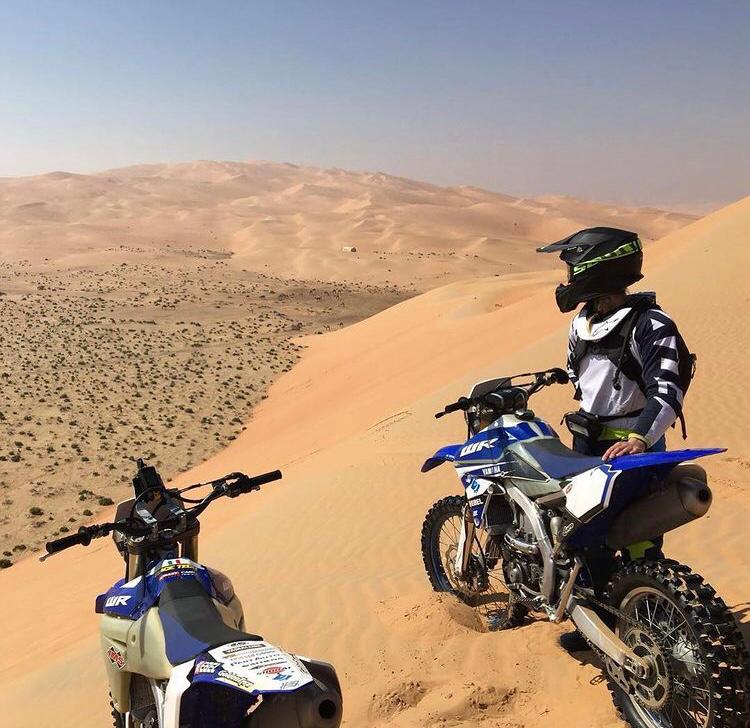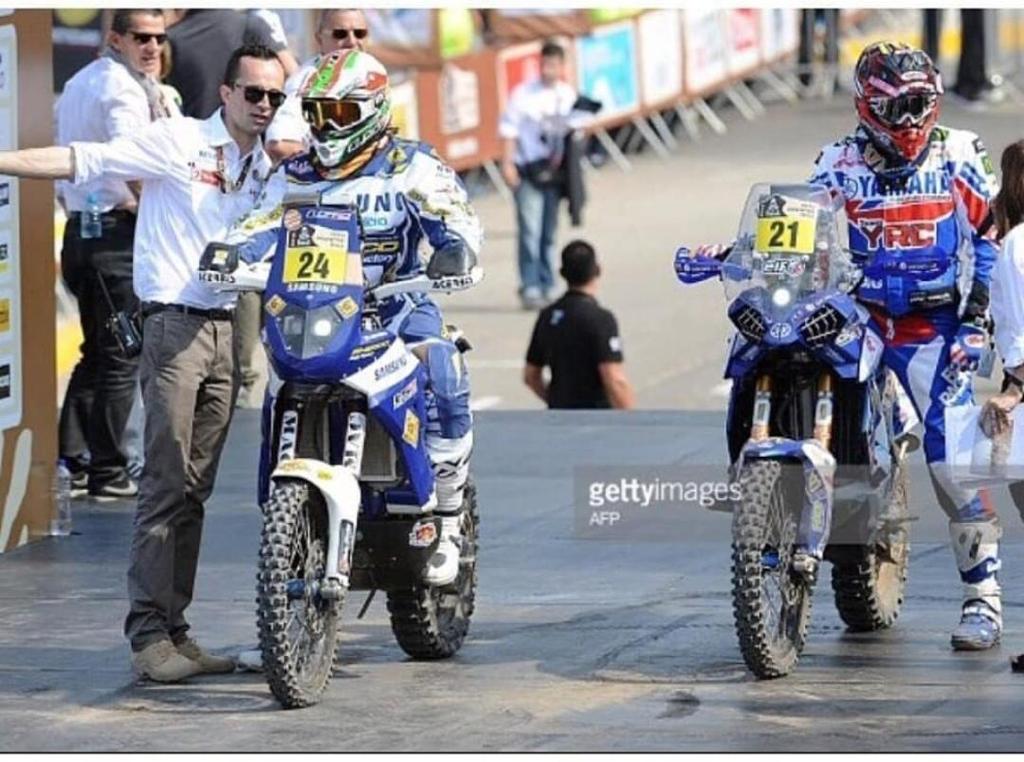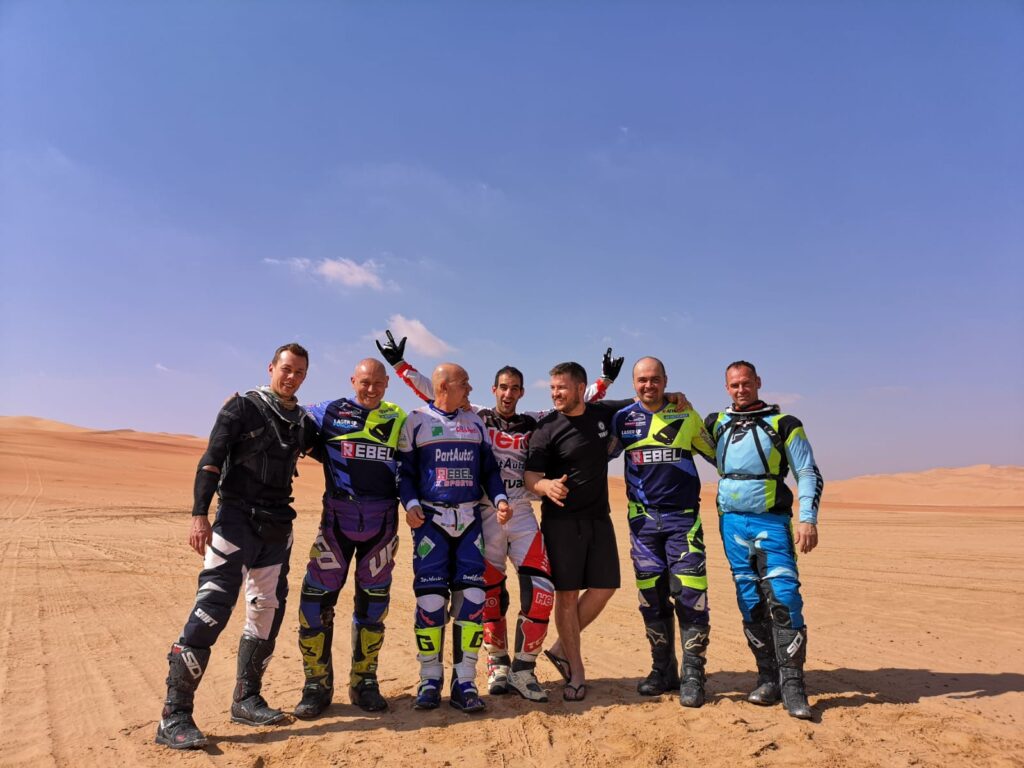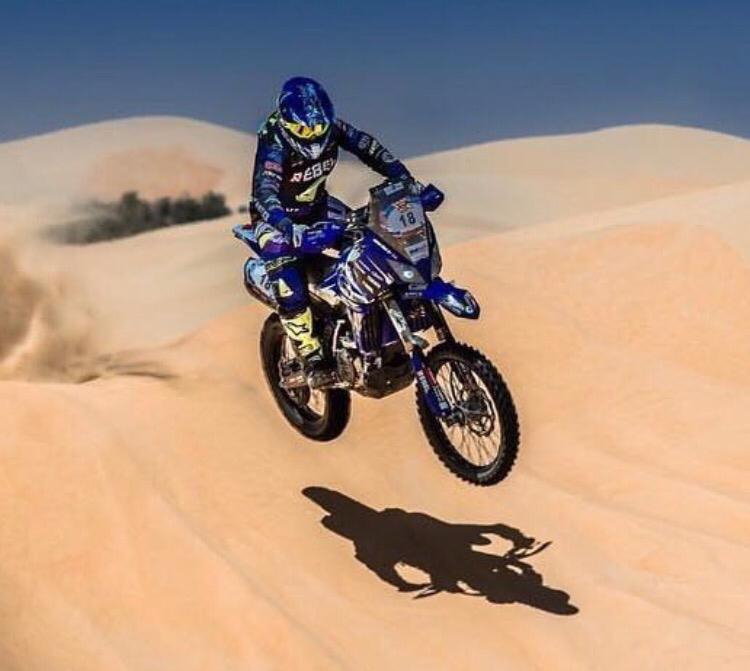Uncategorized
Baja to Dakar: A Life of Racing
James West, a Scottish rally racer and founder of Crazy Camel, a Dubai-based off-road and rally racing training hub, is a legend in more ways than one. Having been born in the Middle East, James started riding three-wheelers in the sand at an early age. When he moved back to the UK, James took up motocross racing and was soon doing rounds of the British Championships; when the 4-stroke dirt bikes became more and more prevalent, James moved to Dubai and went back to riding sand.

“In Europe, you’ve got different motocross tracks every weekend. In Dubai, there’s only one, and I always loved riding sand, so moving back into the open desert felt natural. I heard about the Desert Challenge rally and in 2006, I decided to give it a go. Back then, I didn’t know what I needed to race a rally, so I simply went to a bike shop in Dubai, asked them what I might need – a roadbook setup, a 30 liter tank – then built the bike myself and entered the Desert Challenge. I had a good run there: for the first four days, I was in the top five, then crashed out, but this was a good start”, James recalls.
In 2007, he entered the Desert Challenge again. “I was better prepared this time, I’d learned roadbook properly, and that year, I did really well: I finished 3rd, right behind Marc Coma and Cyril Despres. The next year, I got a chance to ride a 690, and that was a fantastic run – it felt so good riding a big bike, and I came second in class and 3rd overall”, James says.

From Rally to Baja
After that came an invitation to race Baja 1000. “Francisco Arredondo asked if I’d be interested to come to Baja 1000 to join a team with Victor Rivera and Ivan Ramires, and I didn’t hesitate. It was an amazing experience, and we had a fantastic run: finished first overall in the 250’s class and ninth overall; then we did it again on 450’s next year and finished 3rd overall”, James shares.
In 2010, he got a call from Cyril Despres inviting him to race Rally Dakar as a support rider. Unfortunately, training in Spain, James was riding behind Despres when a rock from his bike hit James’ knee…taking him out of the Dakar team just weeks before the race. “The rock hit my knee between the knee brace and the knee pad, a one in a million chance of that ever happening, but there it was – my knee was blown out, and there was no way I could start at the Dakar”, James says. Another invitation came in 2011, when Pal Anders asked James to be a support rider for him, but the bad Dakar luck continued: three weeks before the Dakar, James broke his wrist.
Finally in 2013, James joined the Sherco team for the Dakar and raced the world’s toughest rally. “In 2013 in South America, the Dakar was going to be all about sand, so Sherco was looking for a good sand rider. I flew to France, tested out the bike, and absolutely loved it, but I just had bad luck again.

During the race, I had issues with the carbon fuel tank which was disintegrating – pieces of carbon were going into the fuel injectors, and this set me back: I’d be running among the top ten, then the fuel issue would crop up again, and I’d drop down into the 30’s. On Day 10, me and another rider came together and crashed, smashed up the tanks completely, and I ended up having to cover 150 km with just 60km of fuel in the rear tank. To add to that, I’d bit my tongue badly and needed stitches… All this combined meant the end of my Dakar”, James says.
A Crash That Changed a Life
In between racing, James had founded Crazy Camel, a motorcycle tours and training company back in Dubai training riders to ride sand, learn roadbook, and navigate the desert racing world.

But last year, everything changed.
During a routine ride with a group of friends, James had an accident that put him in a coma for two weeks.
“It was a normal Friday ride. We wanted to do a 150km motocross loop in the desert, and I’d been on that loop the day before. I knew the route really well, I knew all the jumps, and it was supposed to be good fun… Then, we hit one section where there was a bit of a blind jump. I’d come round, hit fourth gear, took off, and it was almost like I smashed into a brick wall. A machine had piled up a huge mound of sand on the landing where there was supposed to be nothing; they’d clearly done it the afternoon before and just left it there. I hit it full speed, the handlebars of the bike went into my stomach, crushed my liver, kidney, spleen… it was a really hard hit, and I was given 20% chance of survival by the doctors. I spent two weeks in a coma and five months in the hospital, and I’m still waiting for another surgery now. It was very tough”, James recalls.

The accident had changed James’ life. Currently, he and his family are back in Scotland, and James has taken up working as a race assistance mechanic for the Africa Eco Race. “I’m a mechanic for Pol Tarres, and there’s a lot of training in Morocco and Tunisia. I’m also doing training with Manuel Lucchesse, as well as rally bike builds. I’m sticking with the mechanical side of things for now because my accident was really tough on the family, and I’ve still got to fully recover”, James shares.
“I get a lot of offers for racing and training, especially training people to use roadbook, get involved in rallies, so who knows…For now, the mechanic stuff is good. At least I’m involved with bikes again – it was really hard not to be around bikes for a while. I’ve done a lot of racing support over the years, so it’s good to be involved with it again. I may start doing some smaller races a little later on, and I still need to finish Dakar, especially in Saudi. I’d love to go and get a finish under my belt finally! I’ll never stop: the rally racing world is a passion, it’s what I love”, James says.

Advice from a Vet
According to James, the rally racing scene is exploding, and he’s noticed there are more and more riders wanting to give it a go. “I get so many people asking for training for rallies, so it’s definitely getting more and more popular. So many people are getting involved, and it seems the bigger bikes are making a comeback: I started out on 450’s and wanted to get to bigger bikes, then went back to the 450’s, and now, it’s big bikes again.
So many organizers are making rallies accessible to amateur riders, and that’s a great thing. It’s all about challenging yourself, getting out, and riding with world championship riders. My advice to people who want to try their first rally is simple: get in touch with a rider who’s done a rally and ask for first-hand advice. Everybody thinks it’s so complicated, but it’s not – just speak to someone who’s done it, figure it out, and give it a go. I know for a fact you’re going to enjoy it, it’s good fun! If you feel intimidated, do a non-timed rally at first. There’s no stress, you’ll learn your roadbook and your navigation, and then you can enter a timed rally race. Speaking of navigation – this is probably the most important piece of advice: follow your own roadbook! When I was racing the Dakar with Sherco, I stuck to my own roadbook religiously, even when it was really tempting to follow others’ tracks. And I was always spot on. Sticking with your roadbook is super important, I’ve done well at Dakar because I didn’t follow people. Riders get sucked in so easily into following others, so try and avoid this mistake – learn, believe in yourself, and follow your own rally”.
Follow James’ adventures on his Instragam page.

